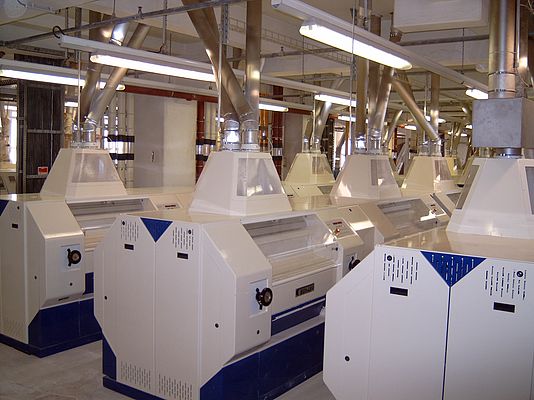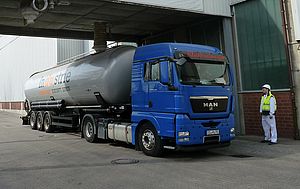A large flour milling plant wished to retrofit one of its mills along with its purification facility with new control technology and visualisation. The short amount of time planned for installation and commissioning presented a challenge for the engineers.
Up to now the mill utilised a Siemens PLC control system (S5). Due to various extensions and additions to the mill over the years, the illuminated indicator board which had served as the operating and display unit was no longer current. Moreover, with this out-of-date control system, the mill was not capable of implementing the present day trend towards more advanced process data acquisition and analysis.
The old S5 control system had a central rack with input/output cards for energising the indicator board and various additional racks including peripheral components for actual process control. To keep the modernisation costs as low as possible the client decided against replacing the control system hardware entirely. Furthermore, the retrofitting work was to take place within a short period of time in order to keep production downtime to a minimum.
For the new control system concept it was decided to apply Siemens’ SIMATIC S7 PLC. The S7-400 CPU and the WinCC visualisation software constitute the core of this modern control system. It was possible to maintain the extension racks of the old S5 control system with their input and output modules as well as the entire power electronics for energizing the aggregates. The new PLC was connected by means of the interface connections IM463-2 in the S7 and an IM314 in the first extension rack. An Ethernet processor with TCP/IP protocol enables communication between the PLC and the visualisation PC.
A decentralised assembly system was chosen for new actuators and analogue set-points of controllers which had been driven by potentiometers in the past. ET200 modules based on S7-300 were employed as Profibus stations, thus keeping the wiring arrangement relatively simple. The hardware assembly which Keller HCW opted for enabled, on the one hand, the flour mill to take full advantage of the capabilities of modern control technology, while on the other hand allowing it to maintain use of the fully functioning “old” control elements. This resulted in great savings to the client and also provides the potential for future replacements to be made without restrictions.
The short amount of time planned for installation and commissioning presented an additional challenge for the engineers. The entire conversion including the hardware modification was to take place on a single weekend. This was made possible by the modular software programming by Keller HCW. As a standard, the PLC function modules contain, among other things, a built-in simulation which allows the client to extensively test the control program in combination with the visualisation. Aside from this, Keller was able to demonstrate the full functionality of the plant to the mill operator prior to initial operation and was able to fulfil last-minute modification wishes and any errors were located and dealt with in advance.
Keller HCW began on a Friday afternoon by carrying out the requisite hardware conversion. On Saturday the system components were inspected and the interaction with the control technology began. On Sunday the mill was already up and running with material. After successful tests under realistic circumstances the mill continued with production on Monday. Consequently the implementation of new technology was successfully executed in a matter of three days.


















